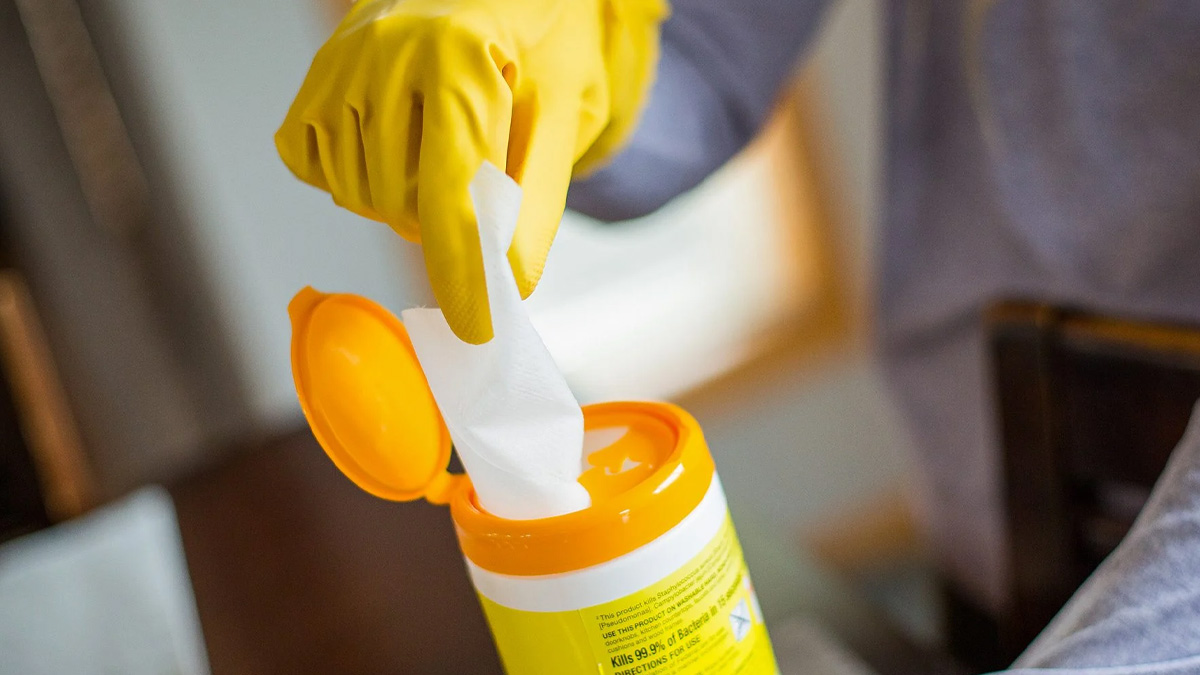
Disinfectant wipes have become a household staple, particularly since the COVID-19 pandemic heightened our focus on cleanliness. Known for their convenience and ability to leave surfaces gleaming, these wipes are frequently used to clean countertops, furniture, glass, and other hard surfaces. However, beneath their reputation for sanitization lies a series of health risks that many are unaware of.
Table of Content:-
The Chemical Composition Behind The Problem
The primary culprits in disinfectant wipes are Quaternary Ammonium Compounds (QACs) and chlorine-based ingredients. These chemicals are powerful disinfectants but come with potential health hazards. Studies have shown that extended exposure to QACs can lead to skin irritation, respiratory issues, and more severe long-term effects, including asthma and infertility.
A study published in the Journal of Exposure Science & Environmental Epidemiology links QAC exposure to a range of health problems, including gastrointestinal irritation, birth defects, and metabolic disruptions. These compounds are not only present in wipes but are also used in paints, pesticides, hand sanitizers, and personal care products, further increasing their prevalence in our daily lives.

How Disinfectant Wipes Affect Health
The frequent use of disinfectant wipes can significantly impact health in various ways:
Respiratory Problems
QACs are often linked with triggering asthma and other respiratory conditions. They can release fumes that, when inhaled, irritate the airways, causing difficulty in breathing.
Also Read: Lancet Report Declares BMI an Incomplete Measure of Obesity, Urges Diagnostic Overhaul
Reproductive Health Concerns
The research has found traces of QACs in the breast milk of mothers who frequently use disinfecting products. This raises concerns about fertility issues and potential developmental problems in children.
Skin Damage
The preservatives and perfumes in disinfectant wipes can strip the skin’s upper layer, causing dryness, irritation, and in some cases, chemical burns.

Chemical Toxicity
Many disinfectant wipes contain additional harmful substances such as hydrogen peroxide, isopropyl alcohol, or ethanol, which can cause gastrointestinal issues like nausea, vomiting, and throat pain if ingested accidentally.
Are Kitchen Wipes Toxic?
Even kitchen-specific wipes, marketed as safe for cleaning food preparation areas, are not free from harmful chemicals. Specialised cleaning wipes, such as those for bathrooms, can be even harsher and cause severe irritation if misused. Experts caution against allowing children to handle or ingest wipes, emphasizing that even small amounts of these chemicals can lead to health issues.
Also Read: Surgical Infection Rate Higher In India Than Many High-Income Countries, Reveals ICMR Study
Safe Alternatives
To minimise the risks associated with disinfectant wipes, consider these safer practices:
- Reserve disinfectant wipes for situations where they are absolutely necessary. For routine cleaning, opt for water and mild soap.
- When disinfecting isn’t critical, baby wipes can be a safer alternative since they lack harsh chemicals.
- Gloves can prevent direct contact with the chemicals in the wipes, protecting your skin from potential irritation.
- Keep disinfectant wipes out of reach of children to avoid accidental ingestion or misuse.
Bottomline
While disinfectant wipes are undeniably convenient, their frequent use comes with hidden dangers that warrant attention. By understanding the risks and adopting safer cleaning practices, you can protect yourself and your family from the potential health hazards posed by these everyday products. Cleanliness is important, but not at the cost of your well-being.
Also watch this video
Read Next
Study Reveals THESE Popular Drinks May Increase Your Risk Of Oral Cancer! Here's How To Stay Safe
How we keep this article up to date:
We work with experts and keep a close eye on the latest in health and wellness. Whenever there is a new research or helpful information, we update our articles with accurate and useful advice.
Current Version